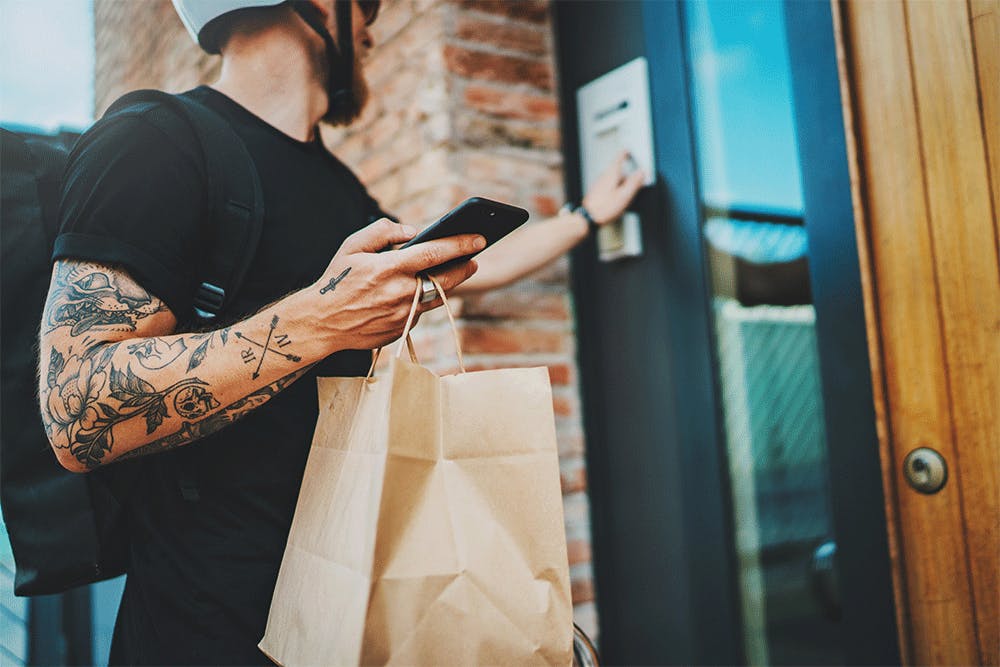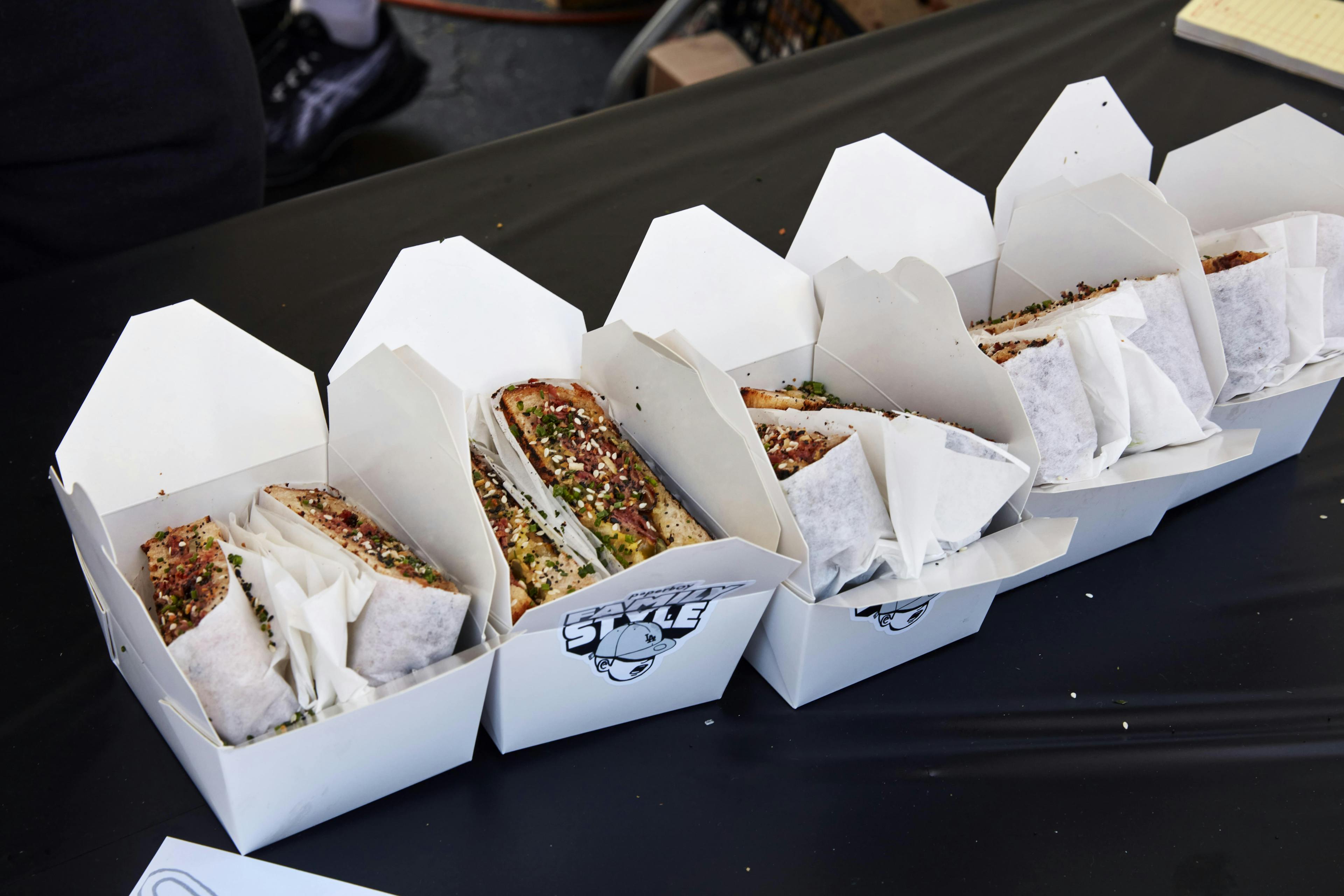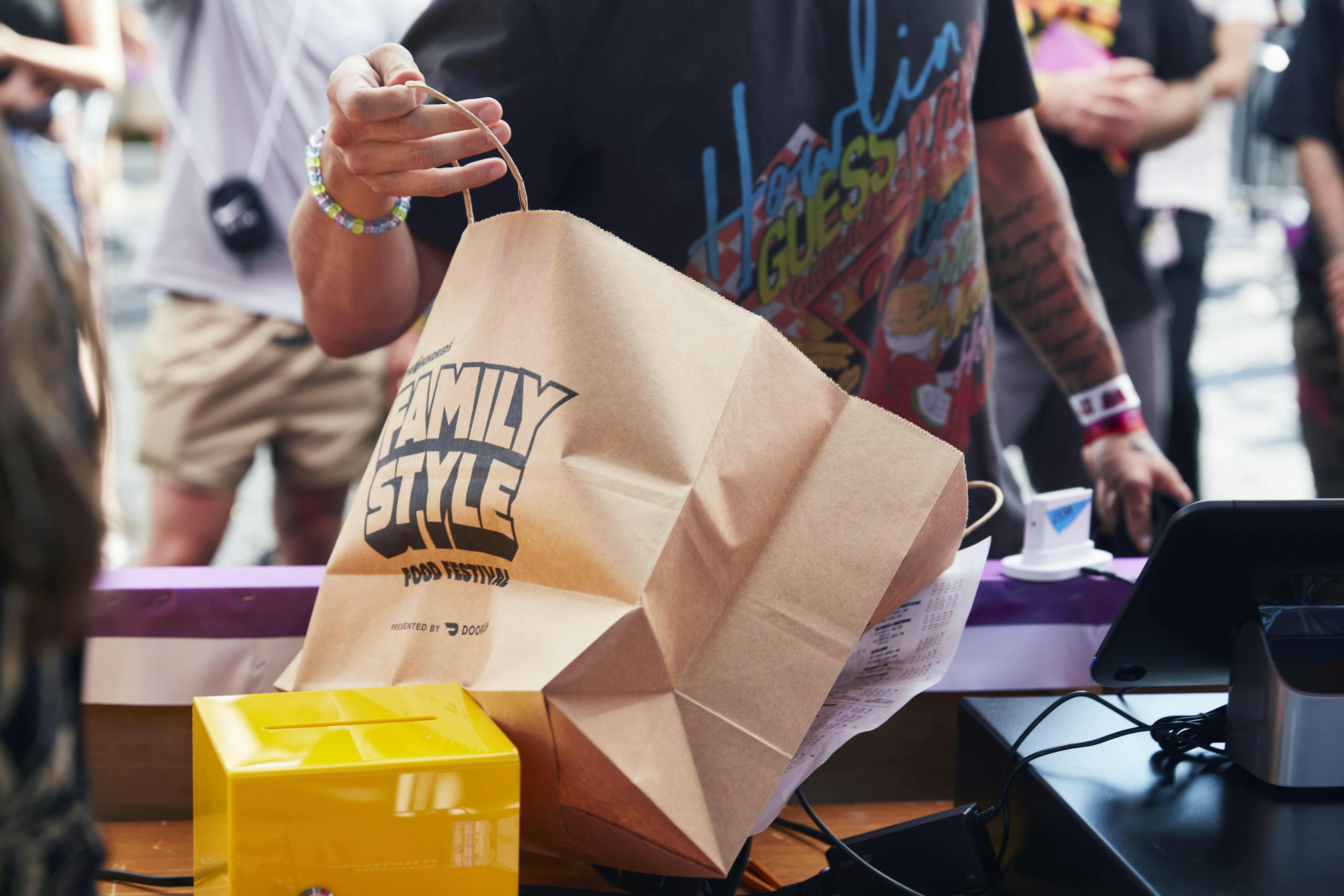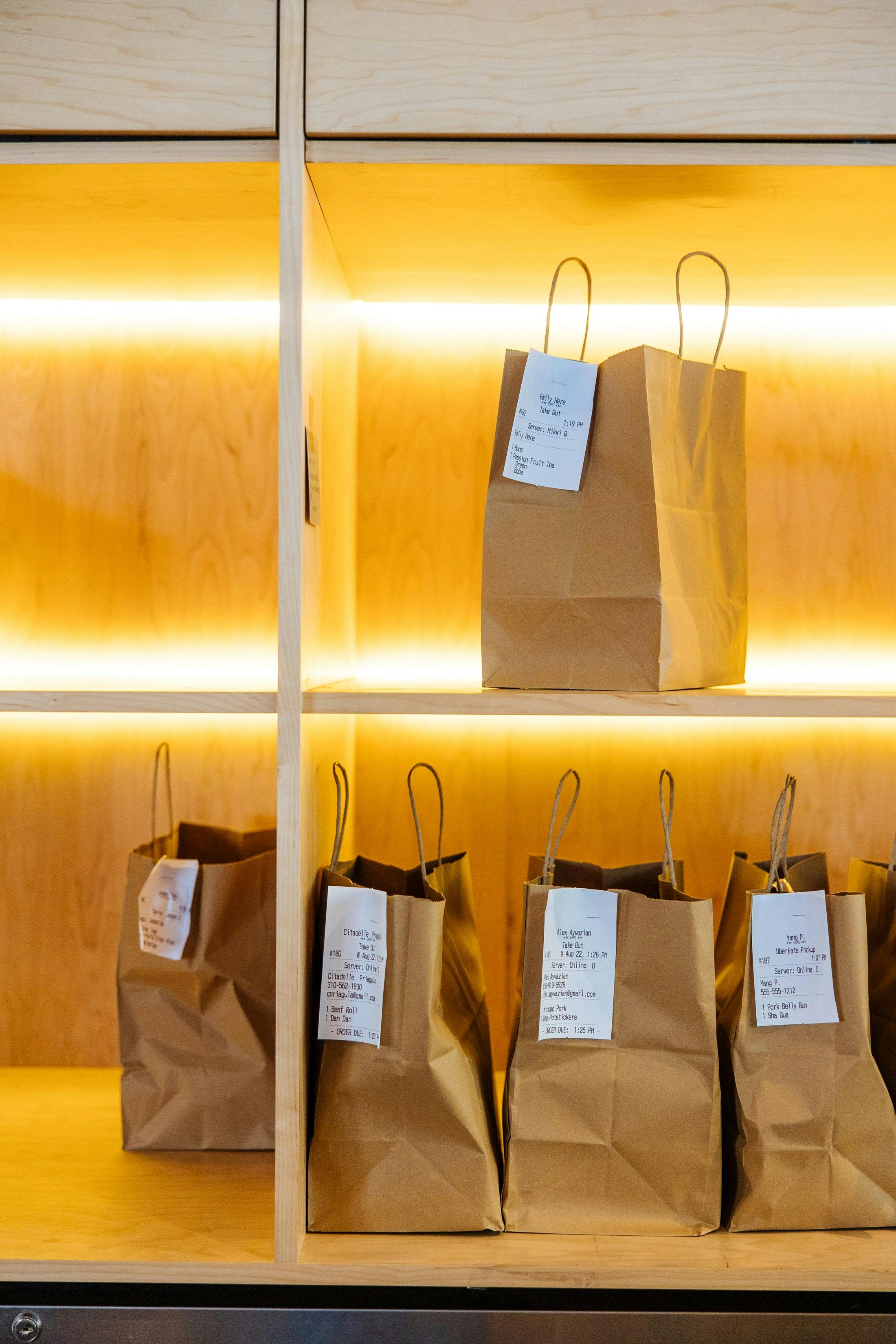
In-house or Third-Party delivery for restaurants: pros and cons
"In house or third party delivery?" Restaurants around the globe are asking this question as they navigate the rise of online ordering.
If you work in the restaurant industry, you’re well aware that online ordering has skyrocketed in the past couple of years — growing 300% faster than dine-in & accounting for 40% of total restaurant sales.
This newfound demand for convenience means restaurants can’t afford not to prioritize delivery in 2022. Chef’s hats off to our scrappy restaurant partners! With heart and grit, you’ve adapted to a new wild-wild-west landscape of delivery while simultaneously persevering through a global pandemic and labor shortages.
Now it’s time to take stock, review, and assess.
There is one central question: Should you invest in your own delivery platform or use third-party delivery services? Although there’s no one right answer, the team at Otter has laid out the pros and cons of third-party apps versus in-house delivery (D2C).
Keep reading to learn everything you need to know about in-house vs. third-party delivery to make the most informed decision for your restaurant.
What you’ll find in this article:
- Third-party delivery platforms: pros & cons
- In-house delivery service: pros & cons
- How to choose the best delivery model for your restaurant
- How to manage a hybrid delivery approach

Third-party delivery platforms for restaurants
Some of the most prominent players in the third-party food delivery space are Uber Eats, DoorDash, Grubhub, Deliveroo and more. Third-party delivery apps partner with restaurants to offer customers the chance to browse unlimited menus, place orders and satisfy their cravings without leaving the house. Listing your restaurant on a third-party app is a convenient way for operators to increase their reach and sales, although it doesn’t come without a cost.
See a complete list of Otter’s third-party app integrations.
Third-party delivery service pros
Increase brand exposure
Listing your restaurant on a third-party delivery app is a surefire way to increase your restaurant’s reach. As a restaurant owner, your job is to follow and satisfy the customer, and your (potential) customers are on the apps. In fact, 63% of adults use third-party apps; a percentage predicted to grow within five years. Since delivery apps work as a storefront, listing your restaurant on third-party apps is a simple way to reach many people without investing a lot in marketing.
Simplify your operations
Like it or not, third-party apps have strategically dominated the delivery space, which means they’ve simplified the process for both restaurateurs and customers. It’s quick and easy to partner with third-party apps and start getting orders right away. All you need to do is sign up, and the platform manages the process for you (ex., drivers, customer service, platform infrastructure, etc.) Note: learn how to sign up for Uber Eats & other third-party apps on our blog.
Focus on your core business
Not only does partnering with third-party apps guarantee a more extensive reach than launching your own direct-to-consumer delivery platform—it’s also less work. Instead of spending time launching and managing your own delivery service, using third-party apps for your restaurant allows you to focus on what you love the most: making delicious food, hiring and managing staff, and developing a unique experience. Time is money within the restaurant industry, and having one less aspect of your business to think about is a relief.
Third party delivery service cons
Paying the price of commission fees
Understandably, commission fees from third-party apps have rattled restaurant owners, prompting many to push back and even some major players like GrubHub. On average, the margins are high, with an average of 20-30% commission fee per third-party app. However, it’s important to weigh how much partnering with third-party apps increases sales for your restaurant overall. Above all, it is essential to lean into analytics to track and manage your restaurant’s performance. If you’re interested in accessing easy-to-use data and discovering analytics through advanced reports, sign up for Otter today.
Lack of customer control
A significant drawback to third-party apps is sacrificing control over the entire delivery journey. Sure, you can govern how mouth-watering your menu items turn out, but after you hand the order to the courier, there’s no sure way to ensure the entire experience goes as planned. It’s challenging to put work into creating a delicious meal without knowing for sure it’ll arrive warm, on time, and satisfy the customer’s expectations. You know first-hand how frustrating it can be when customers blame your restaurant for a negative delivery experience that’s out of your control. You also know how critical reviews are for your restaurant.
Navigating the competition
While third-party apps increase your restaurant’s reach, they also increase your number of competitors. Knowing your restaurant is listed alongside thousands of restaurants can make it hard for your specific business to stand out.

In-house delivery platforms for restaurants
Direct to consumer delivery (D2C) or in-house delivery means owning and running a delivery service specifically for your restaurant. Many owners choose D2C to gain complete freedom over their customer’s delivery experience on restaurant online ordering systems.
There are two ways to run delivery in-house: 1. Create a delivery platform on your website directly; 2. Partner with D2C platforms like Flipdish, Mr. Yum, Allset, Lunchbox, Menufy, Sauce, FreshBytes, LoDel, Incentivio, Captain and more. Keep reading to learn the pros and cons of in-house delivery. See a full list of Otter’s D2C integrations
In-house delivery service pros
No Loss of Margins
The most apparent pro for running in-house delivery is earning 100% of your delivery profits. Cutting out the middle-man also means cutting out the extra cost of commission fees, which is a huge perk—especially for smaller, local restaurants.
More control over customer experience
Running delivery in-house with a restaurant order management system is a fool-proof way of controlling every aspect of your delivery business. Overall, you can decide the business model for your restaurant by hiring your staff of choice, setting business standards, and staying in the know from handoff to arrival. With intimate knowledge of your delivery business, you can have a birds-eye view of what’s working, what’s not, and the level of customer satisfaction after each order.
Owning Customer Data
Running D2C lets you know precisely who’s ordering from your restaurant and how often. Essentially you get to “own” the customer & subsequently their data. Not only do you have all your customer’s info, but you also know they’re choosing to order directly from your restaurant— a powerful way to build brand loyalty and run campaigns tailored to your customer-base.
In-house delivery service cons
Dealing with Logistics
While running D2C for your restaurant grants you total control over the delivery experience, it also means controlling the logistics and costs of managing your own delivery platform. In lieu of paying third-party app fees, you have to invest in the infrastructure expenses required to run delivery in-house. The capital needed to pay for materials, insurance, cars, delivery drivers, and more is a significant investment. Additionally, it will take a good chunk of time to plan and execute the logistics of running delivery direct to the consumer.
Ongoing upkeep
After setting up D2C, the work of managing in-house delivery for your restaurant is an ongoing process. Whether it’s acquiring licenses to deliver according to city guidelines, training and managing staff, or ensuring tech runs smoothly—the upkeep certainly adds a whole new set of responsibilities to your already full plate.
Smaller customer pool & less reach
If you decide to operate solely in-house, it’s crucial to consider whether or not you have existing customers ready to order from your restaurant. Without the reach of the third-party apps, it’s more challenging to reach new customers (especially when most delivery orderers are scrolling through third-party apps to discover new restaurants).

How to choose the best delivery model for your restaurant
Now that we’ve covered the pros and cons of third-party apps vs. in-house/ D2C delivery, you’re probably wondering what all this information means for your restaurant. Should you invest in your own delivery platform or use third-party apps? Unfortunately, there’s not a one-size-fits-all answer to this question.
Each restaurant should choose the best delivery model according to its goals, size, and capital. After partnering with 100,000 restaurants worldwide, our overall recommendation is a hybrid approach. Yes, that means running delivery in-house and partnering with third-party apps to make more money through delivery and virtual restaurants.
Hybrid approach: Pros of using both third-party apps & D2C to power your delivery business:
- Generate reach and new customers through third-party apps quickly & efficiently
- While you make money off orders from third-party apps, take your time to add a functional and well-planned D2C option for your restaurant
- Build loyalty, brand recognition & appeal to both types of customers: those who prefer third-party and those who prefer ordering directly from a restaurant
Deliver better with Otter
We know what you’re thinking: how the heck do I manage all of these platforms?
At Otter, our job is to make delivery easier for restaurants like yours. Otter was built to eliminate delivery headaches by centralizing all your online orders in one tablet, no matter the channel.
With Otter, you can analyze all your delivery orders through advanced & easy-to-access reports, run automatic promotions, and simplify your delivery business.
Otter works with the top partners in the restaurant industry & integrates with almost all 3rd party, D2C, and POS systems, so getting started is simple.
Fill out the form below to get started with Otter today!

Book a demo to see how Otter’s all-in-one platform can help your restaurant thrive.